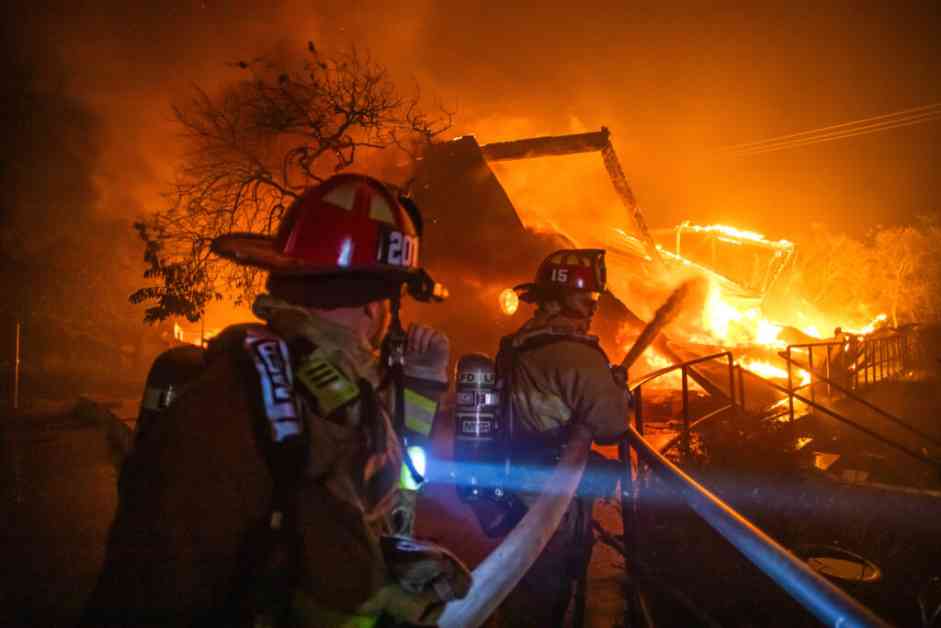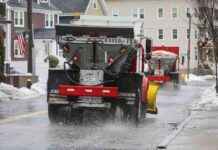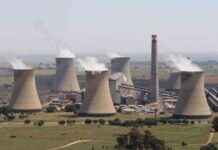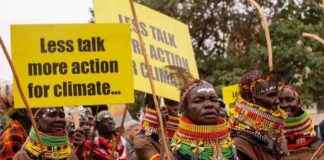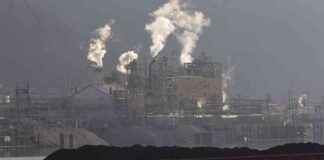The Impact of Unusual Forces on Apocalyptic Fires in Los Angeles
Sustained powerful winds reaching nearly 100 miles per hour are driving fast-moving wildfires near Los Angeles, spewing smoke, destroying homes, closing roads, and forcing thousands of people to evacuate.
As of Wednesday afternoon, the Palisades fire along the coast near the Santa Monica mountains has burned more than 5,000 acres, while the Eaton fire near Pasadena has torched at least 2,200 acres. These blazes have led to the tragic deaths of at least two people and the destruction of over 1,000 structures. Additionally, smaller fires are also scorching the region.
Fire forecasters had been warning since the beginning of the year about the conditions ripe for massive infernos, particularly in Southern California. Climate scientist Daniel Swain from the University of California Los Angeles emphasized the exceptional accuracy in predicting these events from a meteorological standpoint.
The winter months in Southern California typically see rainfall, but recent weeks have been unusually dry with little snowfall in the surrounding mountains. Coupled with above-normal temperatures in December, vegetation like grasses and chaparral have dried out, providing ample fuel for the fires.
Santa Ana winds, seasonal gusts in Southern California, have been unusually strong this year, further exacerbating the fire situation. These winds, combined with dry weather and high temperatures, are posing significant challenges for firefighters working to contain the flames.
Human Impact and Future Threats
The growing danger posed by wildfires in California is heightened due to the increasing number of people living in fire-prone areas. This influx of residents raises the likelihood of starting fires and amplifies the damage caused when fires erupt. California’s escalating wildfire risk has had a profound impact on the state’s insurance industry, prompting regulators to allow insurers to adjust pricing to reflect the heightened risk of future catastrophes.
Global average temperatures are rising due to climate change, further priming the landscape for wildfires. Addressing the wildfire threat will require a multifaceted approach, including using fire-resistant building materials, controlled burns, reevaluating residential locations, improving forecasting, adjusting insurance pricing, and reducing greenhouse gas emissions.
Despite these efforts, the danger from fires in Southern California is expected to worsen in the future.
Understanding the Santa Ana Winds
Southern California experiences the Santa Ana winds during the winter months, which are characterized by cool air from inland mountains moving downhill toward the coast. Several factors, including warm ocean temperatures and high-pressure systems, contribute to the intensity of these winds, leading to increased fire risks.
The Role of Climate Change
Climate change plays a significant role in exacerbating wildfire conditions in Southern California. Extreme weather fluctuations, such as alternating between periods of heavy rainfall and drought, create ideal conditions for wildfires to spread rapidly. This weather whiplash, coupled with rising temperatures, increases the likelihood of major blazes in the region.
In conclusion, the convergence of ample fuel, high winds, and dry weather near densely populated areas has resulted in an unprecedented wildfire crisis in Southern California. Addressing the root causes of these fires, including human activity and climate change, is crucial to mitigating future risks and protecting communities from devastating wildfires.
Donations from readers like you fund every aspect of what we do. If you don’t already, will you support our ongoing work, our reporting on the biggest crisis facing our planet, and help us reach even more readers in more places? Please take a moment to make a tax-deductible donation. Every one of them makes a difference. Thank you.

